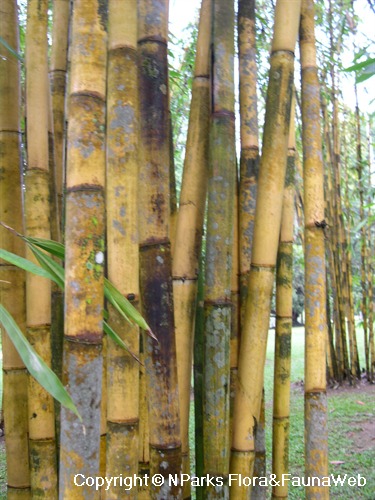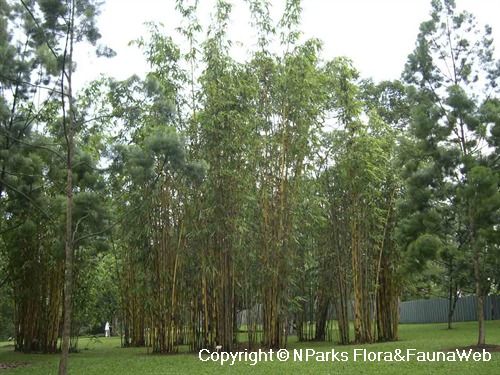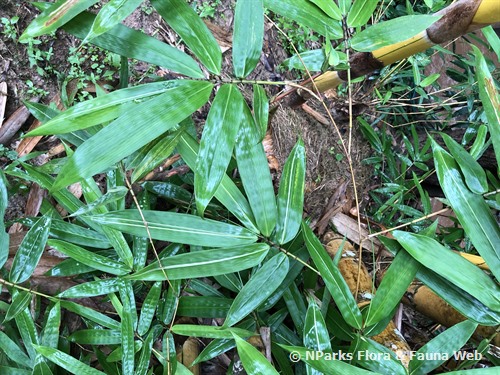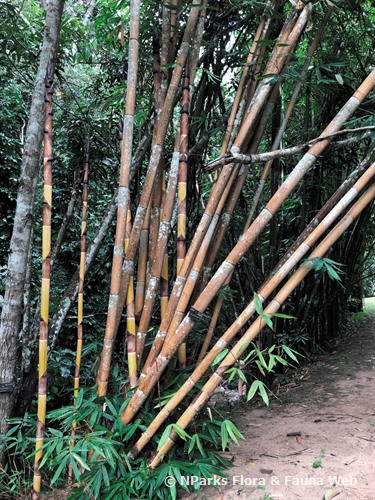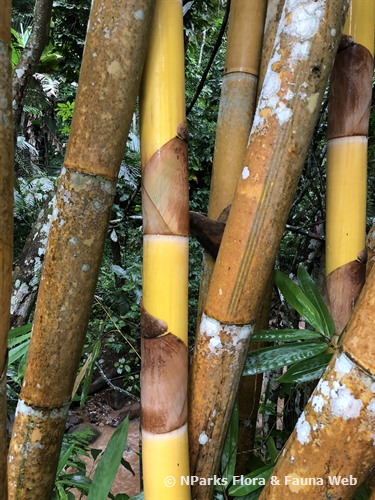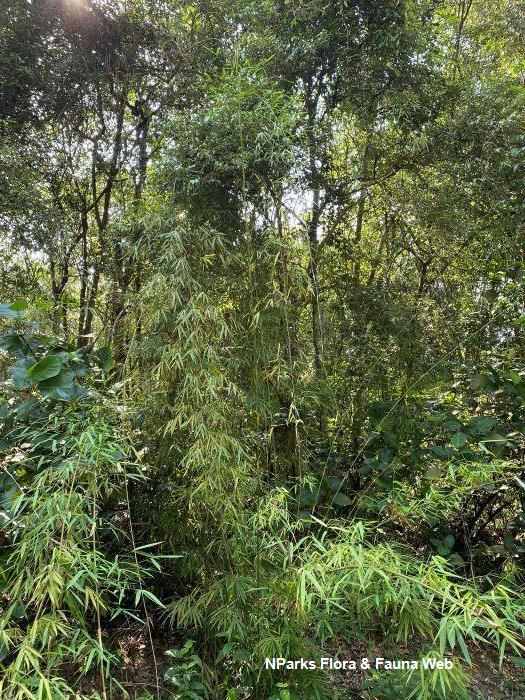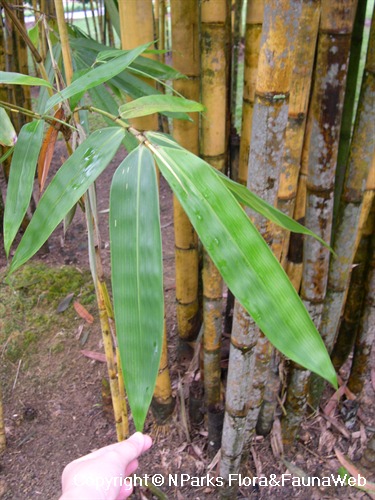
Back
Schizostachyum brachycladum
| Family Name: | Poaceae (Gramineae) |
| Common Name: | Buluh Nipis, Golden Bamboo, Buluh Lemang, Scared Bali Bamboo, 短枝黄金竹 |
Name
Classifications and Characteristics
| Plant Division | Angiosperms (Flowering Seed Plants) (Monocotyledon) |
|---|---|
| Plant Growth Form | Grass or Grass-like Plant (Tall Grass (Poaceae)) |
| Lifespan (in Singapore) | Perennial |
| Mode of Nutrition | Autotrophic |
| Maximum Height | 12 m |
Biogeography
| Native Distribution | Southeast Asia |
|---|---|
| Native Habitat | Terrestrial |
| Preferred Climate Zone | Tropical, Sub-Tropical / Monsoonal |
Description and Ethnobotany
| Growth Form | Clumping bamboo forms erect culms up to 12 m tall. |
|---|---|
| Foliage | Large leaves are solid green or green variegated with varying amounts of yellow, longitudinal stripes. |
| Stems | Smooth, think-walled culms (4-7 cm wide) are yellow with a few green stripes. |
| Flowers | This cultivar can flower as frequently as every year. |
| Fruit | Dry, indehiscent fruits are known as grains. |
| Cultivation | It grows best when well-watered and mulched. |
Landscaping Features
| Desirable Plant Features | Ornamental Foliage |
|---|---|
| Landscape Uses | Hedge / Screening |
| Thematic Landscaping | Golden Garden |
Plant Care and Propagation
| Light Preference | Full Sun |
|---|---|
| Water Preference | Moderate Water |
| Rootzone Tolerance | Well-Drained Soils, Fertile Loamy Soils |
Foliar
| Mature Foliage Colour(s) | Green, Yellow / Golden |
|---|---|
| Leaf Area Index (LAI) for Green Plot Ratio | 3.5 (Shrub & Groundcover - Monocot) |
Floral (Angiosperm)
| Flower Grouping | Cluster / Inflorescence |
|---|---|
| Inflorescence Type | Spikelet / Compound Spike |
Fruit, Seed and Spore
| Fruit Classification | Simple Fruit |
|---|---|
| Fruit Type | Indehiscent Dry Fruit , Caryopsis / Grain |
Image Repository
Others
| Master ID | 1150 |
|---|---|
| Species ID | 2443 |
| Flora Disclaimer | The information in this website has been compiled from reliable sources, such as reference works on medicinal plants. It is not a substitute for medical advice or treatment and NParks does not purport to provide any medical advice. Readers should always consult his/her physician before using or consuming a plant for medicinal purposes. |

